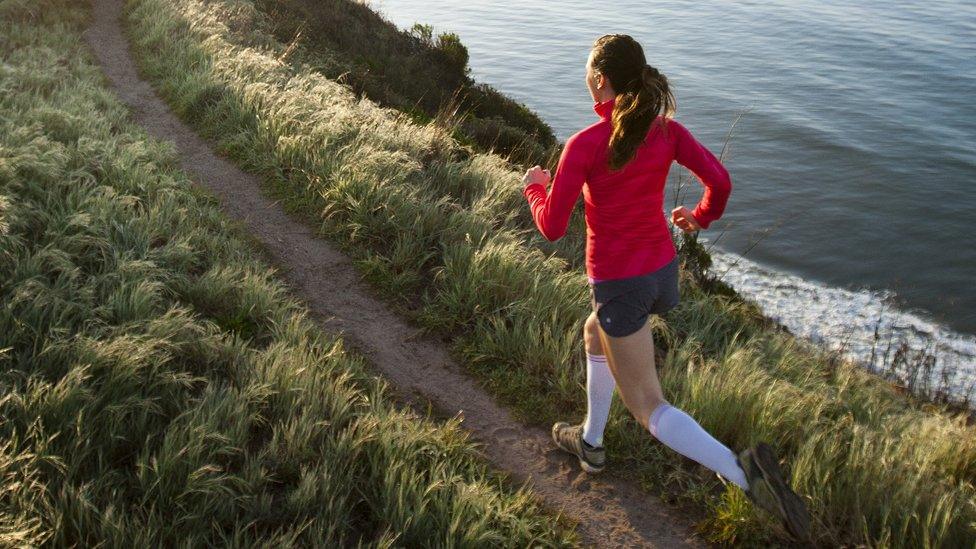NHS at 75: Tredegar digs up past with hospital time capsule
- Published
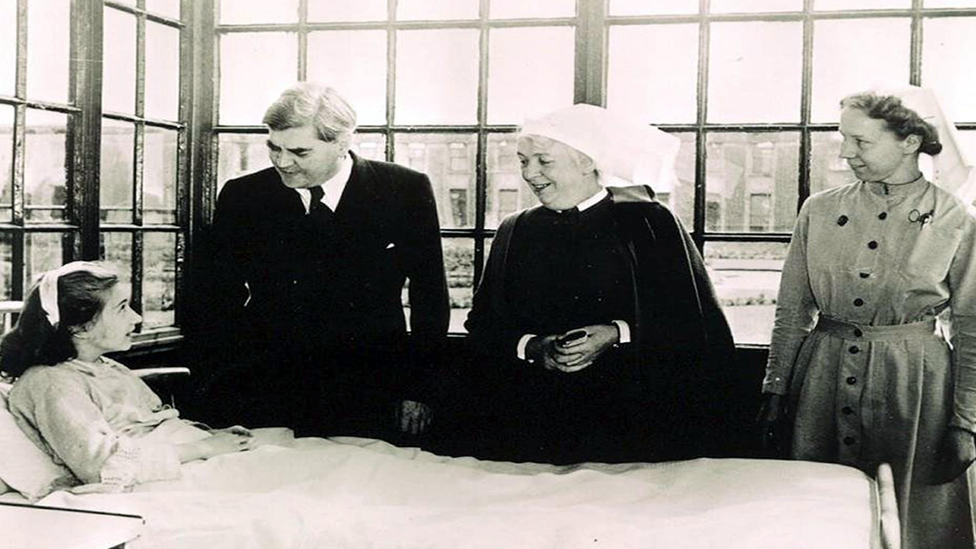
Aneurin Bevan meets teenager Sylvia Beckingham - the first NHS patient - at a hospital in Manchester in 1948
Workers have dug up a time capsule buried in the foundations of an old hospital from more than 120 years ago.
Aneurin Bevan - widely considered to be the "architect" of the health service - was aged six when the Tredegar Cottage Hospital opened in his home town.
The time capsule, containing old coins and newspapers, has gone on display at the Blaenau Gwent town's museum.
The site of the old hospital is being turned into a new £19m health and wellbeing centre.
The centre will include GPs, dentists and pharmacists, when it opens in November.
It is a far cry from the old hospital, opened in 1904 at a cost of £3,200, and its upkeep paid for by iron and coal workers donating a halfpenny a week from their wages.
The new centre will be named after Tredegar's most famous son, whose birthplace on Charles Street is just over a mile away.
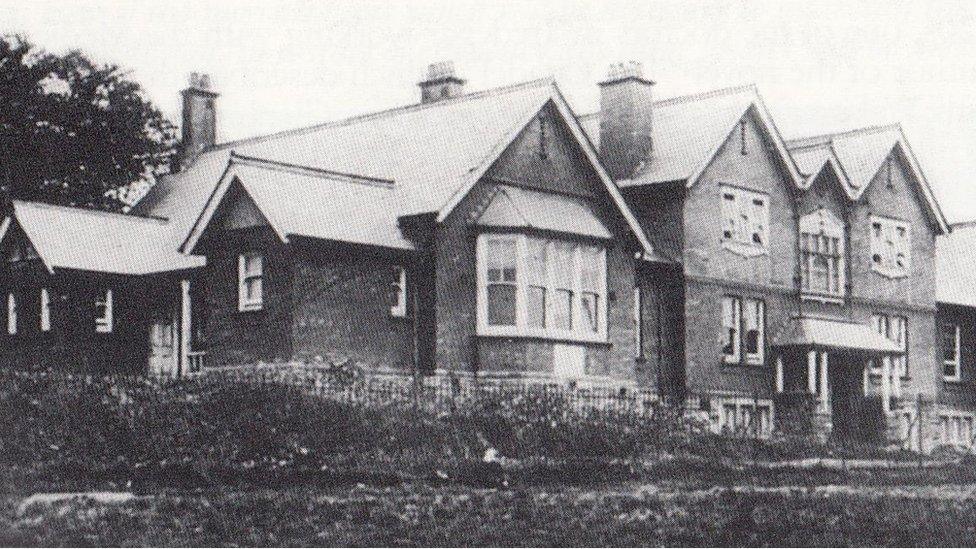
Tredegar hospital opened in September 1904 on land donated by Lord Tredegar
But the staff who will soon start working there will face the type of pressures that would have been hard for Bevan to imagine when, as minister for health in Clement Attlee's Labour government 75 years ago, he led the establishment of the fledgling health service.
"The challenges are very different now [because] people's needs are so broad," said Leanne Watkins, chief operating officer of Aneurin Bevan health board.
The new centre will be a "one-stop shop" where people will also be able to access council-run social services.
While it is designed to meet future needs, the new building is rooted in the past, having being built on the old Tredegar hospital site.
While digging those foundations, construction workers, following a tip-off from historians, discovered the time capsule under one of four foundation stones.
The cottage hospital was built as a result of efforts led by the committee of Tredegar Medical Aid Society.

An artist's impression of the new Aneurin Bevan health and wellbeing centre
This was an insurance scheme where miners and ironworkers pooled a proportion of their pay to cover the costs of healthcare they and their families might otherwise not be able to afford.
Bevan would serve on this committee in the 1920s and became chairman of the hospital in 1929.
The society's then-headquarters is now a heritage centre.
"This must be one of the most important spaces, not just in Wales but across the UK. The Medical Aid Society had its offices right here in this building," said Kevin Phillips, who runs the centre.
Although other similar schemes existed elsewhere, the Tredegar model was considered to be one of the largest and most successful and had more than 20,000 members at its height.
"The famous phrase often used by Nye Bevan was that 'we will Tredegar-ise you'," Kevin said.
"That's what cements Tredegar as part of the story of the NHS."
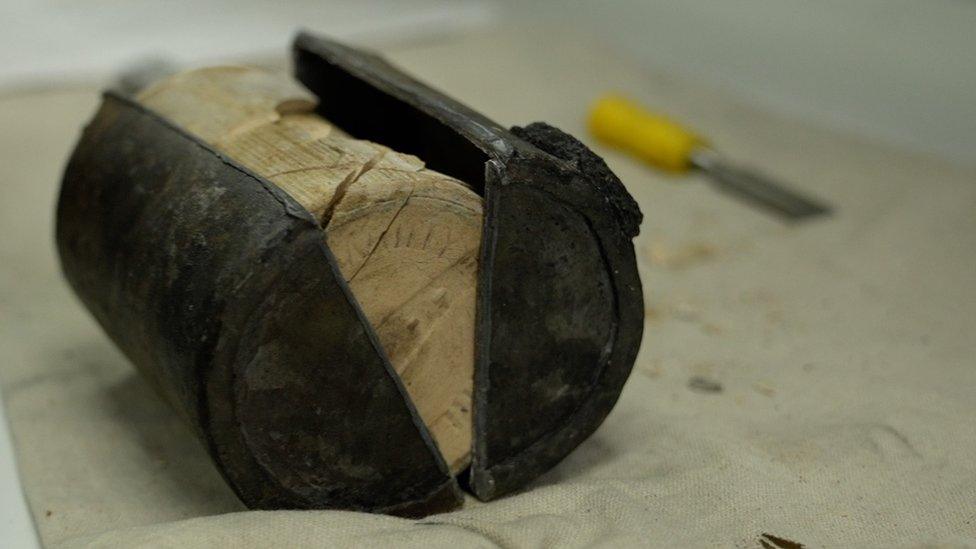
Getting into the time capsule proved to be tricky
What was inside the capsule?
Conservator Peter Meehan of Cardiff University took on the painstaking task of safely opening the capsule - but it proved to be a little bit more tricky than anticipated.
"What we discovered was that the lead was really tightly bound into the pot. And when they sealed it there was no top on the pot so it was wedged in really tightly," he said.
As a result, the capsule's contents saw the light of day first time in 120 years.
Inside were some newly minted Edward VII coins from 1903 and earlier Victorian ones.
It also contained four tightly rolled-up newspapers - editions of the Tredegar Argus, Western Mail, South Wales Daily News and Merthyr Express.
Luckily the newspapers were in good condition and after some work by specialist paper conservator the articles, written in tiny print, could finally be read.
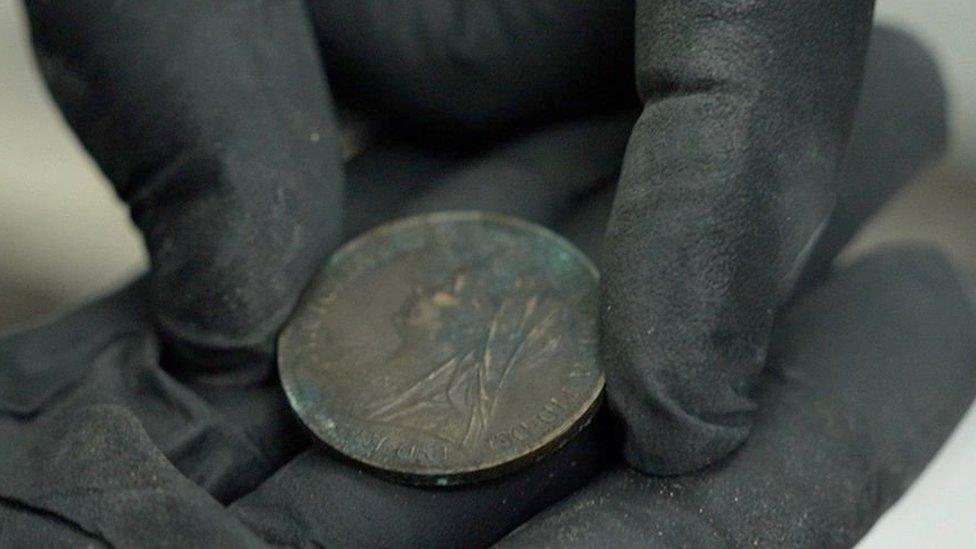
The coins date back to Victorian and Edwardian times
The hope eventually is to put the items on display in the reception area of the new health centre.
"We're so chuffed that this has come back to us - it's another jewel in our crown" said Philip Prosser, chairman of Tredegar local history society, a group of volunteers who run the town museum.
"I was born in 1939 and was born with club foot. My parents had to take me to Bristol for treatment. But it was all free because my father was paying into the Medical Aid Society.
"Everything was planted into his [Bevan's] brain because Tredegar had an excellent scheme."
Visitors to the museum to see the capsule include children from primary schools who are also learning about the NHS's history.

Tredegar's pupils are learning about the town's part in NHS history
Roxy-Mae from St Joseph's RC Primary School was fascinated by the newspapers and coins.
"The writing then was really small. Now the writing on newspapers is really big and we have pictures and everything," she said.
"And the coins... with a penny back then you could get lots of things. Now you can't get anything with just one penny."
The effects of inflation and economic pressures, combined with increasing demand, has also been felt by the NHS.
Improvements in medicine, increasing survival rates and healthcare costs rising sharply has arguably led to a situation where the needs of the population has outstripped its resources.
The children are also acutely aware that the NHS is facing some big staffing challenges.
"I think it needs more doctors and nurses," Buddy from Deighton Primary School said.
"My mum's a nurse and she says it needs more staff because it's really busy... sometimes she has to work until 8pm or 9pm."
"They also need more staff in reception" added Leo from Glanhowy primary.
"My dad hurt his arm and we went to the doctors to get it checked out and there was nobody at reception. We had to wait five minutes for reception then they told us to go upstairs."
But all the children agree about the value of that the NHS, in no small part rooted in their own community, is available for all, regardless of the ability to pay.
"It's really important because you know there's a cost of living crisis now and it would be literally unaffordable if you had to pay for it," said Olivia from Georgetown primary.
Samuel from St Joseph's had the last word.
"It makes me feel absolutely amazing and it's a really warm feeling to know that here, in this very town, the founder of the NHS was born."
- Published16 May 2023
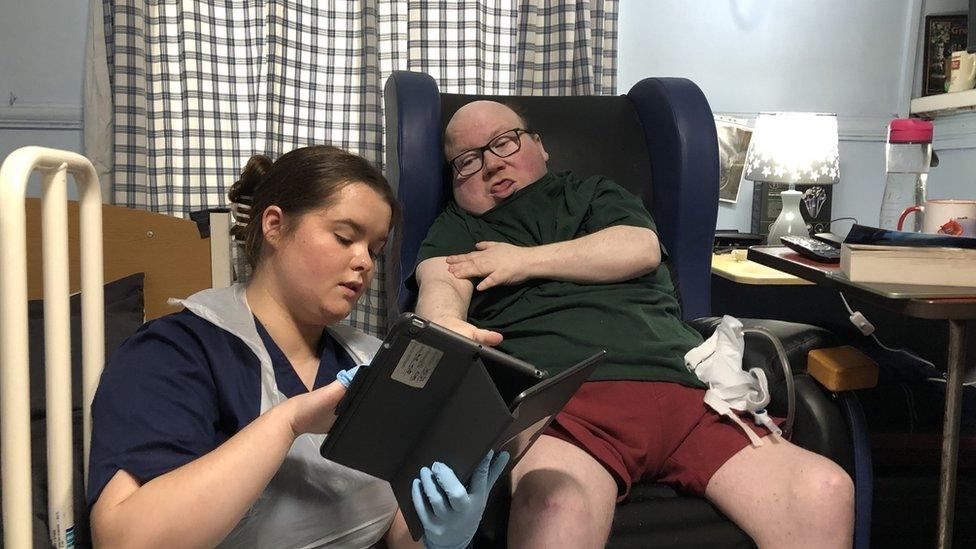
- Published23 April 2023
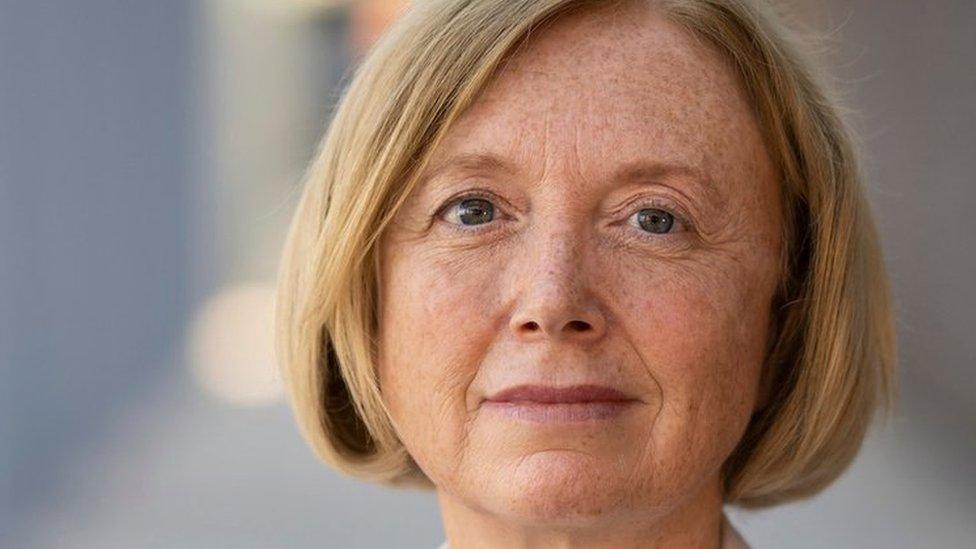
- Published29 June 2023
